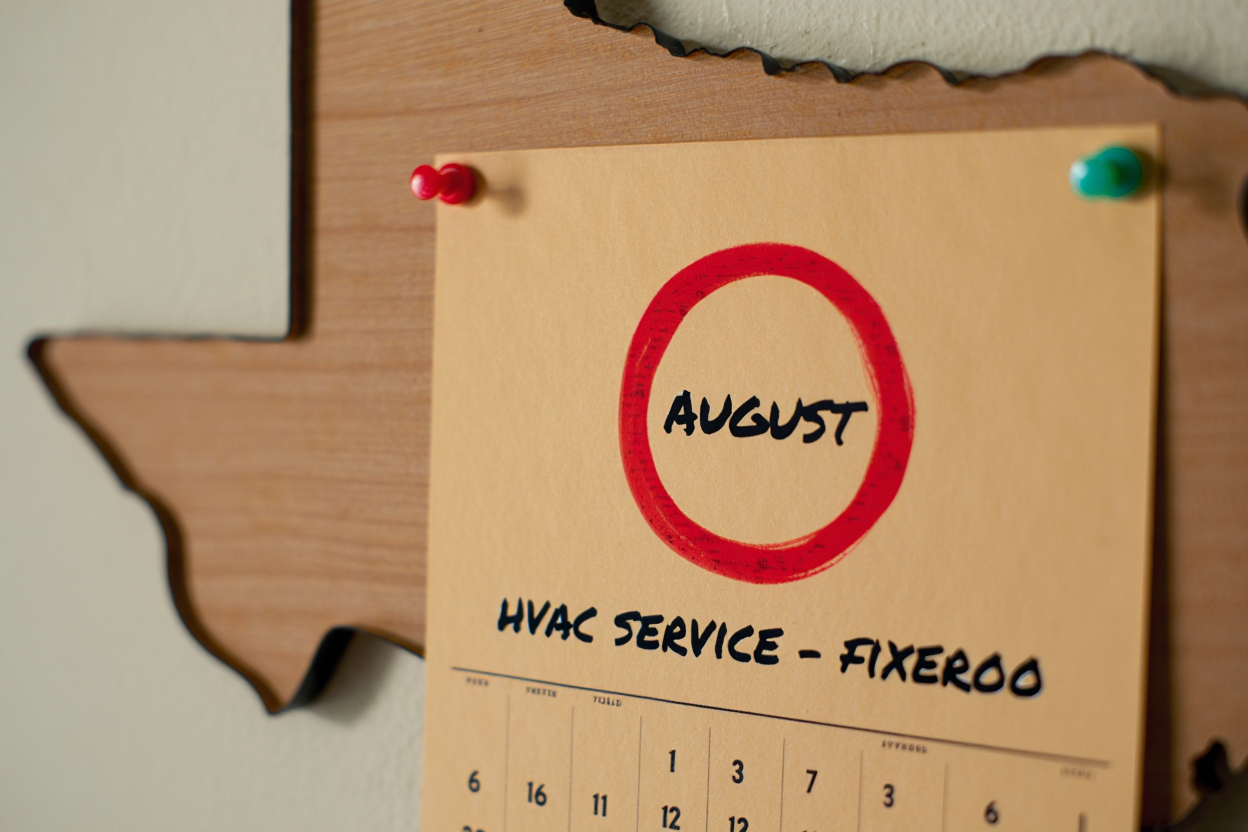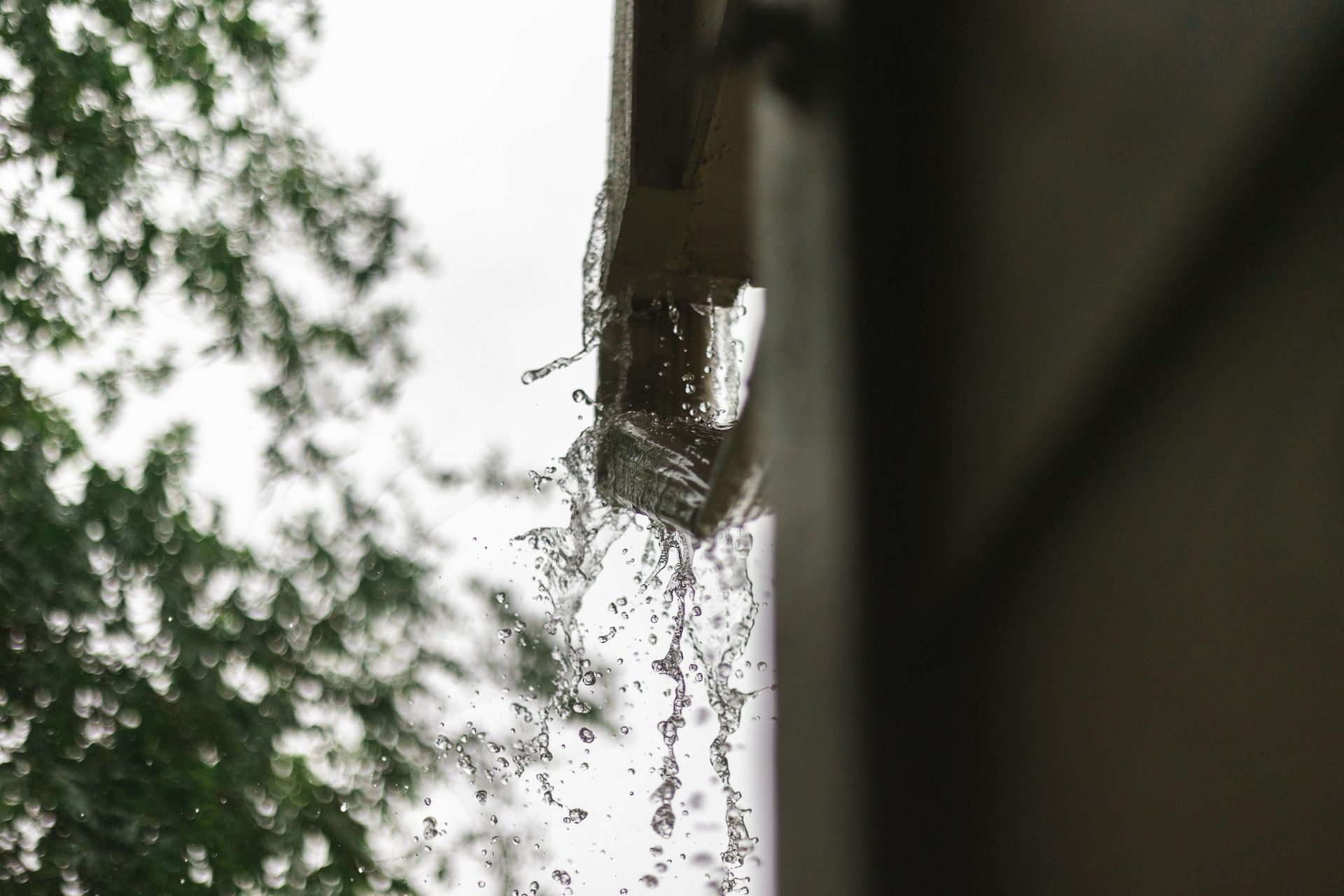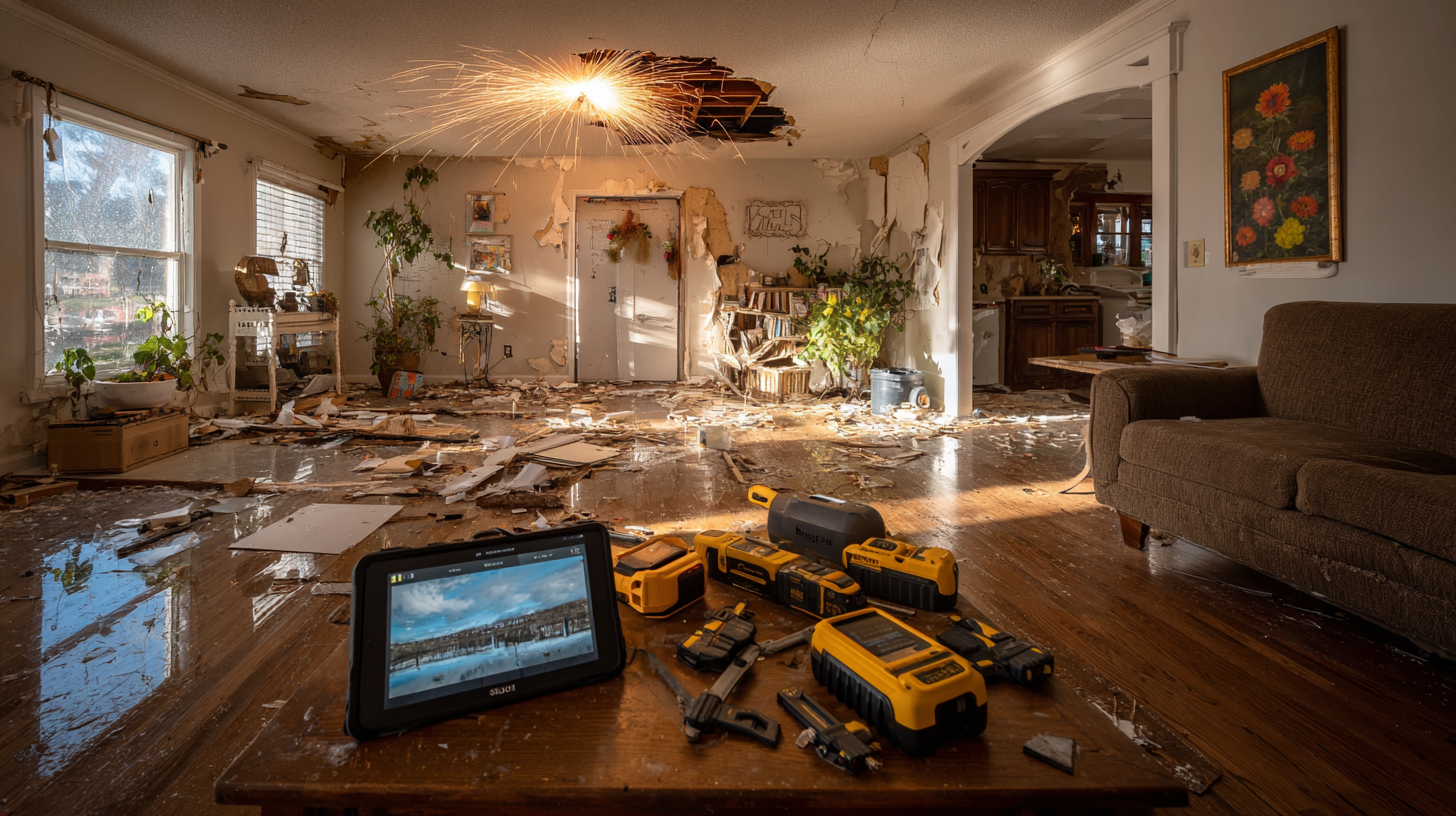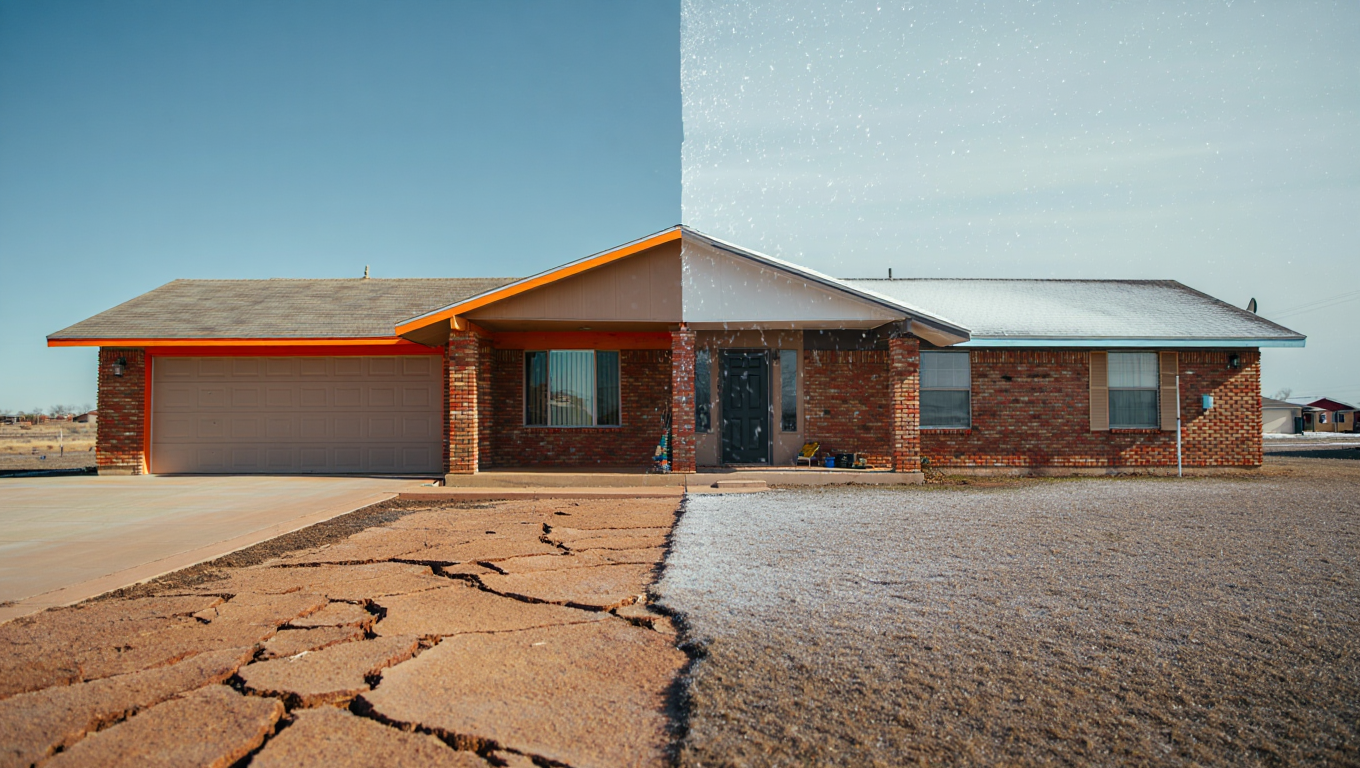Gutter Cleaning Hacks for Abilene Homeowners
Beat the Cottonwood and Clogs
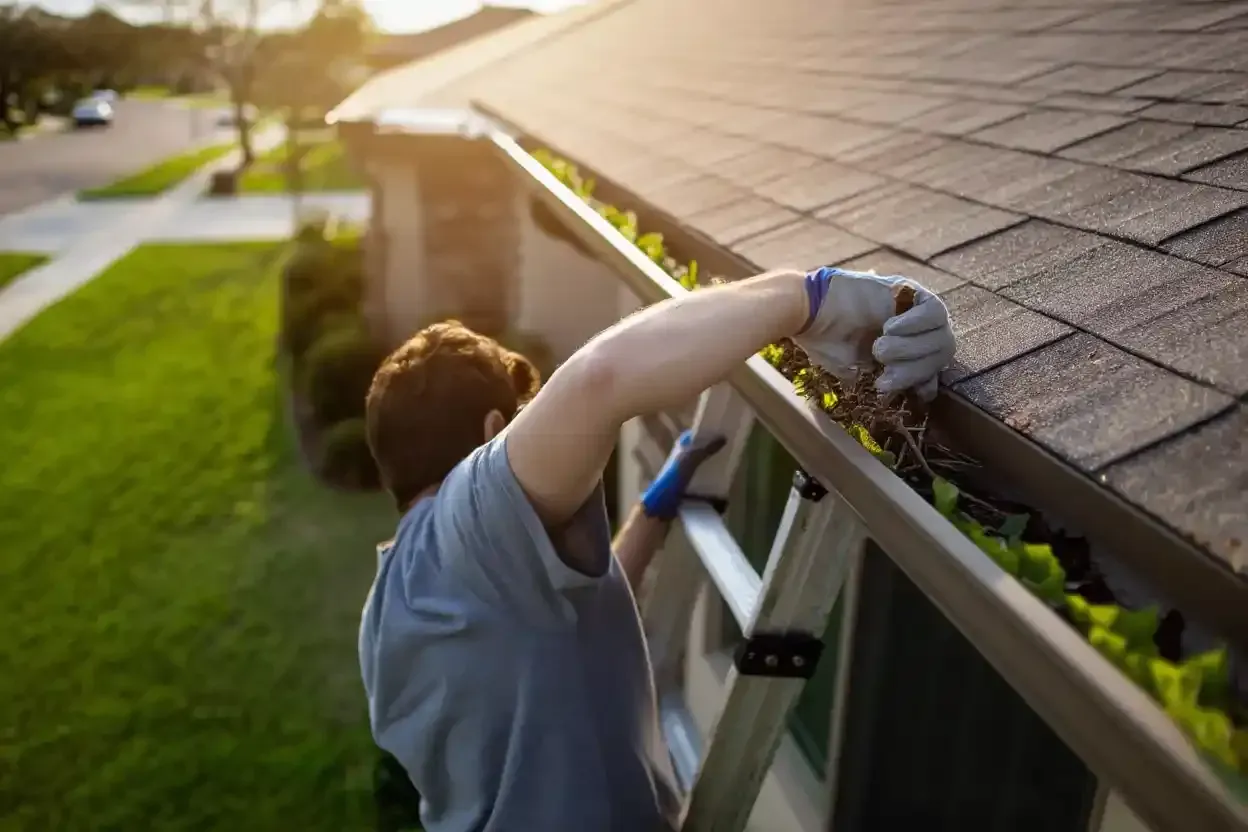
Saturday morning. Coffee's getting cold while you stand in the driveway staring at your gutters. That cottonwood fluff from three weeks ago is still hanging out the downspout like a flag. Now there's a puddle by your front steps that wasn't there yesterday, and those begonias look like they've been through a flood.
This scene plays out in driveways all over Abilene. We get those spring winds that fill gutters faster than most people can keep up with. Add a sudden downpour and clay soil that doesn't drain worth a darn, and you've got water going places it shouldn't go.
Most folks around here know gutters matter, but they don't think about them until water starts showing up in weird places. A little spillover seems harmless until you notice mud creeping toward the foundation or streaks running down the siding. By then, what started as a simple cleaning job has turned into something bigger.
Why West Texas Makes Gutters Work Overtime
Our climate doesn't do gutters any favors. Those cottonwood trees that make spring beautiful also create a mess that's hard to believe. The fluff doesn't just sit there either. Mix it with a little moisture and it turns into a mat that blocks everything.
Then there are the dust storms that coat everything in grit, followed by rains that turn that grit into mud. Throw in temperature swings that make materials expand and contract, and you've got conditions that test every joint and bracket.
We worked on a house over near the mall last spring. The homeowner thought she was on top of things because she cleaned her gutters every fall. What she didn't account for was how much debris accumulates during our active spring weather. By May, her gutters had so much buildup that the first real rain sent water cascading over the sides, washing out her flower beds and leaving ruts in the yard.
That's when she called us.
How Our Team Tackles Abilene Gutter Messes
When we show up for a gutter cleaning, we're not just scooping out leaves. We're looking at the whole drainage system to make sure it can handle what our weather throws at it.
First thing we do is clear all the visible debris by hand. Cottonwood, pecan shells, those weird seed pods that blow around in summer. All of it comes out before we even think about running water through the system.
Next, we check every downspout. Sometimes the problem isn't what you can see from the ground. Clogs hide in the bends and connections. We use drain snakes and high-pressure water to clear blockages that have been building up for months.
After that, we flush the entire system with water to test the flow and spot any leaks. This is where we find the small problems before they become expensive repairs. A loose joint here, a separated bracket there. Easy fixes when you catch them early.
Last month we helped a family in one of those newer neighborhoods south of town. Their gutters looked fine from the ground, but when we got up there, half the system had pulled away from the fascia board. The brackets were loose, and water was getting behind the gutters and into the eaves. Could have been a major problem if they'd waited much longer.
DIY Gutter Maintenance That Actually Works
Look, we're not going to pretend everyone needs to hire professionals for basic gutter cleaning. If you're comfortable on a ladder and know what to look for, there's plenty you can handle yourself.
Here's what works based on what we see around Abilene:
Time it right. Don't clean gutters right after a storm when everything's soaked and heavy. Wait a day or two for things to dry out. Wet debris is harder to remove and can pack clogs tighter.
Work smarter, not harder. Start at the high end of the gutter and work toward the downspout. This way you're moving debris in the direction water flows instead of fighting against it.
Check your tools. A leaf blower can be great for dry debris, but it'll just pack wet stuff tighter. Know when to use your hands and when to use tools.
Don't forget the downspouts. The visible part of your gutters might look clean, but if the downspouts are clogged, water's still going to overflow. Run a hose down each one to make sure water flows freely.
Inspect while you work. Cleaning time is perfect for spotting loose brackets, separated joints, or places where the gutter's pulling away from the house.
One trick we've learned over the years: drop a few ice cubes down your downspouts during cleaning. As they melt, they help flush out small debris that might be stuck in the bends.
Red Flags That Mean It's Time to Call Us
Some gutter problems go beyond basic cleaning. Here are the signs that mean you need professional help:
Water spilling over during light rain means you've got serious blockages or damage that's affecting the whole system.
Streaks or stains on your siding usually mean water's been overflowing for a while and might have caused damage you can't see.
Standing water near your foundation is never good. It can lead to settling, cracks, and basement moisture problems.
Gutters pulling away from the house or sagging sections mean the mounting system needs professional attention.
If you see any of these signs, don't wait. Small problems become expensive repairs faster than you'd think, especially with our soil conditions.
The Hidden Costs of Neglecting Gutters in Abilene
We've seen what happens when gutters get ignored too long. It's not pretty, and it's not cheap.
Foundation problems from poor drainage can cost thousands to fix. That clay soil we have here doesn't forgive standing water. It expands when wet and contracts when dry, putting stress on foundations that can lead to cracks and settling.
Roof damage happens when gutters overflow and water backs up under shingles. What starts as a small leak can turn into major repairs if it gets into the decking or insulation.
Even landscaping damage adds up. We've seen beautiful flower beds and expensive plantings destroyed by gutter overflow. Replacing mature landscaping isn't cheap.
One client in the Wylie area learned this the hard way. Neglected gutters led to water damage in her attic, ruined insulation, and stained ceilings in two bedrooms. The repair bill was more than ten times what regular gutter maintenance would have cost.
Making Gutter Maintenance Part of Your Routine
The best approach is to make gutter care part of your regular home maintenance. Check them twice a year at minimum, and after any major storm.
Spring is critical here because that's when cottonwood season hits. Even if you cleaned gutters in the fall, spring debris can fill them up fast.
Fall cleaning is about preparing for winter rains. Getting leaves and seed pods out before they have a chance to decompose and create blockages.
If any of this sounds like more than you want to handle, we get it. Gutter cleaning isn't exactly fun, and it can be dangerous if you're not comfortable on ladders.
FAQs about Abilene Gutter Cleaning
How often should Abilene homeowners clean their gutters?
Twice a year minimum, but three times is better if you have heavy tree coverage. Spring after cottonwood season, mid-summer after seed drop, and fall after leaves come down. Our weather patterns make regular cleaning more important than in other parts of the country.
What's the biggest mistake homeowners make with gutter maintenance?
Waiting until there's visible overflow to address problems. By then, you might already have damage to siding, foundations, or landscaping. Small issues caught early are much cheaper to fix than the damage caused by neglect.
How much does professional gutter cleaning typically cost?
Most standard homes in Abilene run between $100 and $200 for thorough cleaning and basic repairs. It's a lot less than the cost of foundation repairs or roof damage from overflowing gutters.
Is it worth installing gutter guards in our climate?
Guards can help with large debris like leaves, but they won't stop everything. Cottonwood fluff, seeds, and dust still get through. They reduce maintenance but don't eliminate it. We recommend quality guards for homes with heavy tree coverage.
What should I do if I notice water stains on my siding?
Call for an inspection right away. Stains usually mean water's been overflowing for a while, and there might be damage you can't see. Quick action can prevent minor issues from becoming major repairs.
Don't let another storm season catch you with clogged gutters. Whether you tackle the job yourself or want professional help, the key is staying ahead of the mess. If you're dealing with overflowing gutters or just want peace of mind, give Fixeroo Abilene a call at 325-225-2540 or email us at fixerooabilene@gmail.com. We know how to handle what West Texas weather throws at your home, and we're here to help keep your gutters flowing and your foundation protected.
